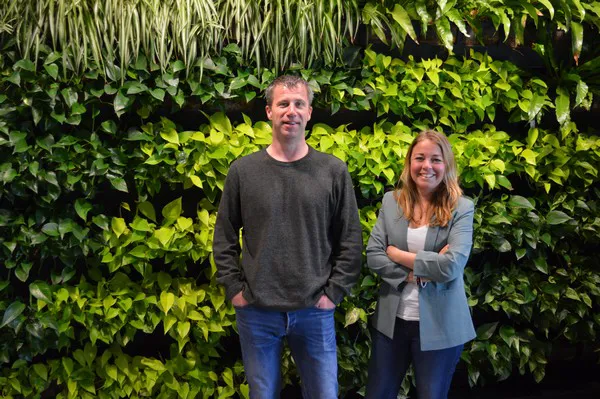You could say there are three main reasons why modern growers want to make their 'footprint' transparent. Firstly, somewhat unlike the older generation, modern growers are more interested or at least more sensitive to the question of their contribution to a green and liveable world; secondly, exactly the same applies to the consumer, there is an increasing demand for a more sustainable and transparent product; and thirdly, the legislator increasingly demands control and insight into all facets of production and business operations.

Remco Scheepens and Winny van Heijningen
All this certainly has an ideological component, assure Raymond Scheepens (MPS) and Winny van Heijningen (LetsGrow.com) of the HortiFootprint Calculator. It is a consequence of growing awareness, advancing insight, and the desire to do business in a socially responsible way. What has been lacking so far is a standard and being able to validate claims, and this is exactly what the 'tool' aims to do.
The idea for the HortiFootprint Calculator came about three years ago when MPS and LetsGrow.com put their heads together for what, certainly in retrospect, seems like a logical collaboration. As is well known, MPS certifies companies on various sustainability fronts, and numerous data are collected by participants and constantly updated. For its part, LetsGrow.com has made it a sport to develop tools to extract meaningful information from data. Moreover, making the footprint measurable was by now a sector-wide theme, and in a similar sector-wide working group (FloriPEF-CR), people had been thinking for some time about how this could take a concrete shape.
To measure is to know
The 'tool' has two functions: a calculation tool for calculating the footprint and outlining scenarios. The former is obvious: at the bottom line, a value comes out: the CO2 emissions for producing a product. For MPS-ABC participants, this is fairly straightforward, as a large percentage of the required data can already be retrieved from the grower's MPS-ABC registration. After this, an immediate follow-up question is: how do I get my footprint down? What if I replace peat with coir, put solar panels on the shed, focus more on biology, etc.? In short, what are the knobs I can turn? What reduction will that yield, and what will it cost to turn them?
'Impact' not a mathematical quantity
One difficulty is that the impact of all the materials used to produce a flower or plant are not set in stone. That is, new raw materials, new recommendations, or new insights from any angle need to be incorporated and can affect the final results. Another complicating factor is that reducing CO2 emissions alone is not blissful. The 'ultimate goal' is a neutral Life Cycle Analysis (LCA), or reducing environmental impact to zero. In this, carbon footprint is one of 16 distinct impact categories. Other impact categories such as ecotoxicity, use of land and water, and fossil fuels also weigh in the total LCA. With a footprint, it is then easy to assess which form of input has which degree of impact on the various facets: for instance, you can use a lot of plastic without it directly affecting the soil life or the fish in the ditch, or the use of a lot of chemicals only has a limited impact on CO2 emissions.
In the near future, they hope to expand the tool to include a number of other impact categories. Either way, interest is high: the HortiFootprint Calculator was launched just over a year ago, and at the end of last year, the 100th participant was already welcomed. Winny and Raymond expect to have the forerunners on board by the end of this year, with the large middle group following naturally. You can't really go wrong with it as a production company anyway: regardless of your own political or social beliefs, it provides insight, and who can really be against it?
For more information:
Raymond Scheepens
HortiFootprint Calculator 
[email protected]
www.hortifootprintcalculator.com
Winny van Heijningen
[email protected]
